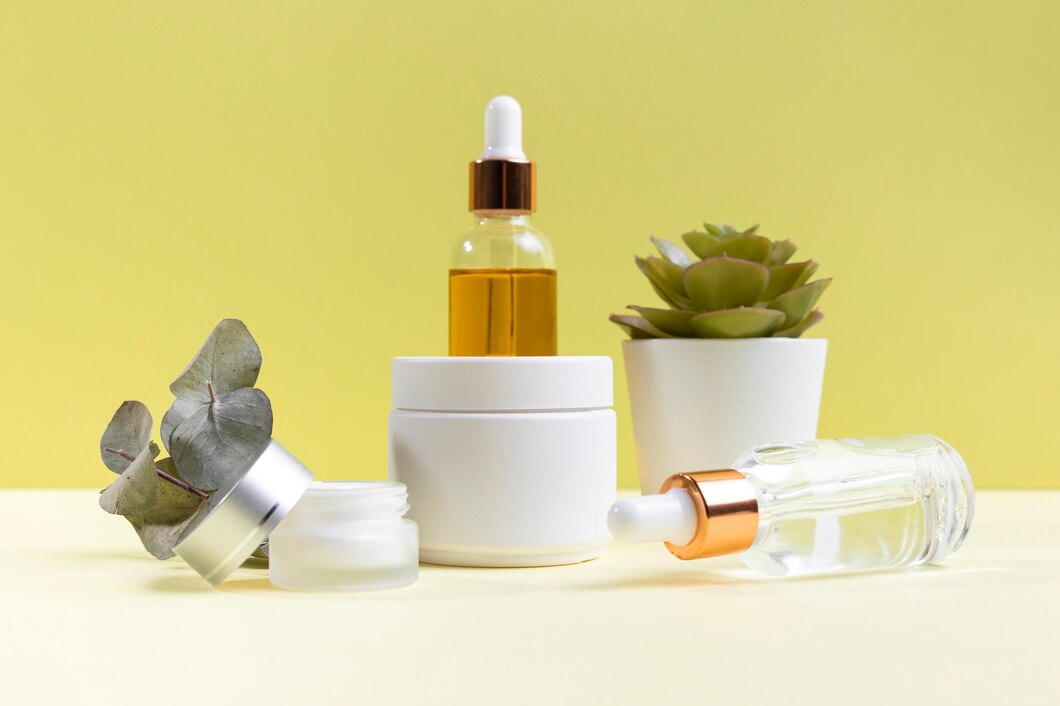Alpha hydroxy acids (AHAs) are known for their exfoliating effects and ability to improve skin texture. Derived from natural sources like fruits, milk and sugarcane, AHAs help remove dead skin cells, promote skin cell turnover and address concerns like ageing, hyperpigmentation and acne breakouts. This guide explores the types of AHAs, their benefits and how to use them safely if you’re considering using them.
What Are Alpha Hydroxy Acids (AHAs)?
AHAs are a group of water-soluble carboxylic acids known for their exfoliating properties on the skin. They work by breaking down the bonds between dead skin cells, allowing them to shed more easily and reveal fresh, new skin underneath. AHAs are commonly found in cosmetic products such as chemical peeling solutions, cleansers, toners, serums and moisturisers.
Why AHAs Are Important for Skin Health
- AHAs promote skin renewal by accelerating skin cell turnover
- They improve hydration and strengthen the skin’s natural moisturising factor
- These acids help reduce the appearance of fine lines, wrinkles and dark spots
- They help with acne prevention by keeping pores clear of debris
How AHAs Work on the Skin
AHAs penetrate the upper layers of the skin, dissolving the bonds that hold dead skin cells together. This process encourages the skin to shed old cells, leading to a smoother, more even complexion and reducing skin discolouration.
AHAs vs. BHAs: A Comparison
| Feature | AHAs | BHAs |
|---|---|---|
| Solubility | Water-soluble | Oil-soluble |
| Targeted Skin Concerns | Acne, dry and rough skin, dull, etc. | Acne, oily skin, clogged pores |
| Skin Penetration | Surface-level | Deeper penetration into pores |
| Exfoliation Mechanism | Breaks down dead skin cells | Dissolves sebum and removes impurities |
| Common Examples | Glycolic acid, lactic acid | Salicylic acid |
Types of AHAs and Their Sources
| AHA Type | Natural Source | Molecular Size | Skin Penetration | Primary Benefit |
|---|---|---|---|---|
| Glycolic Acid | Sugarcane | Small | High | Exfoliation & collagen stimulation |
| Lactic Acid | Milk | Medium | Moderate | Hydration & gentle exfoliation |
| Citric Acid | Citrus fruits | Medium | Moderate | Brightening & exfoliation |
| Malic Acid | Unripe apples and pears | Large | Low | Hydration & skin renewal |
| Tartaric Acid | Grapes | Large | Low | Anti-ageing & mild exfoliation |
| Mandelic Acid | Bitter almonds | Largest | Slowest | Acne control & gentle exfoliation |
Benefits of Using AHAs in Skincare

AHAs provide a wide range of benefits for skin concerns, making them a valuable addition to skincare products.
Exfoliation & Skin Renewal
AHAs accelerate the skin’s natural shedding process, removing dead skin cells to reveal a fresh, radiant complexion.
Anti-Ageing Properties
By stimulating collagen production, AHAs help reduce fine lines and wrinkles, leading to fresher and firmer skin.
Brightening and Hyperpigmentation Reduction
Glycolic and lactic acids fade dark spots and hyperpigmentation, improving skin tone and clarity.
Hydration and Skin Barrier Support
Lactic acid has unique humectant properties, helping retain moisture and strengthen the skin’s protective barrier.
Acne and Blemish Reduction
By keeping pores clear and preventing build-up, AHAs can reduce acne breakouts and improve acne-prone skin.
How to Use AHAs Safely
Here are some tips on how to use glycolic acid, lactic acid and other alpha hydroxy acids safely:
- Start with a low concentration. Beginners should use lower concentrations before increasing strength.
- Introduce gradually. Use AHAs 2-3 times a week initially, then increase frequency if the skin tolerates it well.
- Apply in the evening. AHAs can make skin sensitive to sun exposure; use them at night, and always apply SPF during the day.
- Pair with other hydrating ingredients. Use alongside moisturising agents like hyaluronic acid to minimise dryness.
- Avoid mixing with strong actives. Do not combine with retinoids or strong acids (like beta hydroxy acids) to prevent skin dryness and irritation.
Common Side Effects and How to Avoid Them

While AHAs are effective in skincare, improper application or varying concentrations can lead to side effects.
Potential Side Effects
- Redness and irritation. This may occur if the concentration is too strong for your skin.
- Peeling and dryness. Excessive exfoliation can strip the skin barrier.
- Increased sun sensitivity. AHAs make the skin more prone to sun damage from UV rays.
- Breakouts or purging. Temporary reaction as the skin adjusts to exfoliation.
How to Minimise Side Effects
- Perform a patch test on the inside of your elbow before using a new AHA product.
- Use a gentle moisturiser day and night to maintain skin hydration.
- Always wear SPF 30+ to protect against UV rays and sun exposure.
- Do not over-exfoliate. Limit AHA use to a few times per week.
Conclusion
Alpha hydroxy acids (AHAs) are powerful compounds used in cosmetic formulations that offer multiple benefits, from exfoliation to anti-ageing effects. They help improve skin texture, hydration, and tone when used correctly. However, safe application is key to preventing irritation.
By incorporating AHAs gradually, choosing the right skincare products, and using sun protection, you can achieve smoother, brighter, and healthier skin. AHAs commonly found in topical application can significantly enhance the appearance of the epidermis when used correctly.





